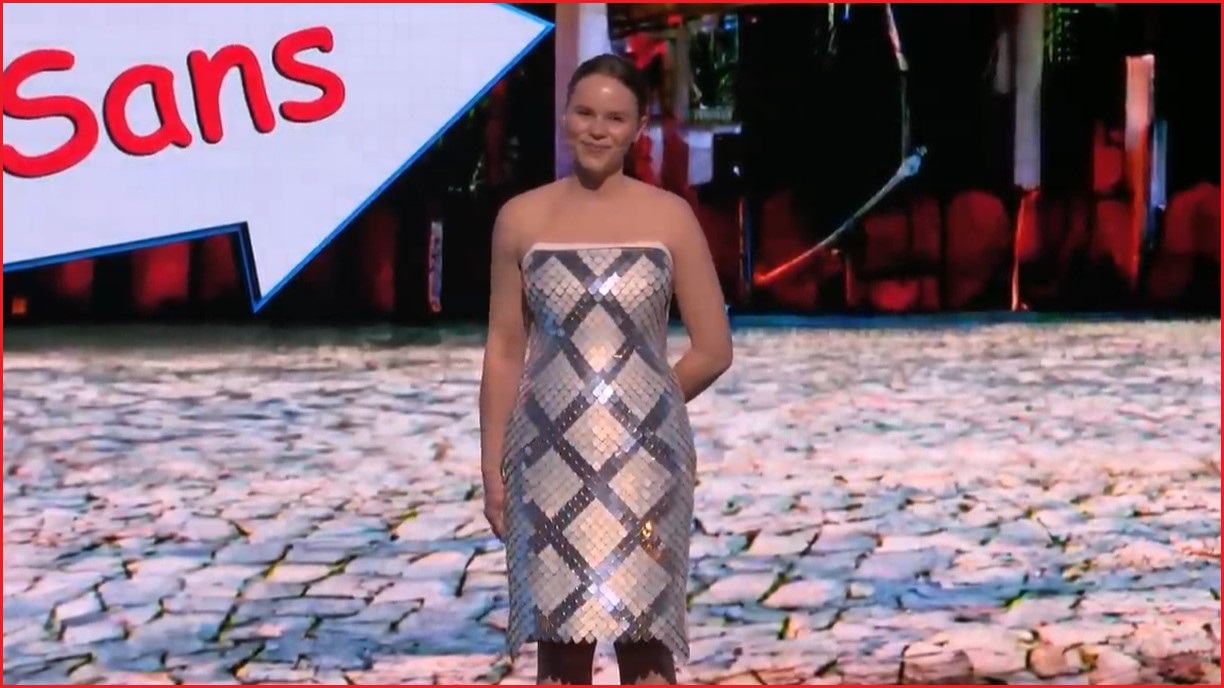Software company Adobe has teased a new interactive technology which can change the design and style of clothing at the click of a button.
At an Adobe event showcasing prototype ideas and ‘sneak peeks’, the company debuted a shapeshifting, animated dress live on stage.
Adobe research scientist Christine Dierk, who personally stitched the dress together, demonstrated the futuristic outfit while wearing it – changing between patterned and plain designs at the press of a button.
“Unlike traditional clothing, which is static, Primrose allows me to refresh my look in a moment,” said Dierk, before punctually refreshing her outfit with a new colour.
In addition to cycling through different patterns and designs, Dierk further demonstrated the dress operating with animated textures, including mobile stripe patterns and water drops.
Furthermore, Dierk explained Primrose technology is not reliant on manual inputs such as a button press, and can automatically react to context such as the wearer’s movements.
“It does have embedded sensors inside of it, I don’t always have to press the button,” she said.
“As I kind of turn and move, the dress will respond,” Dierke added, as the dress’s animated patterns reacted to her on-stage movements.
“Project Primrose is a canvas for creativity and the possibilities are endless. Fashion doesn’t have to be static – it can be dynamic and even interactive.”
The garment is made of flexible textile displays which enable entire surfaces to display content created with certain Adobe products, such as Adobe After Effects, Adobe Firefly and Adobe Illustrator.
First detailed in a 2022 research paper by Dierk and her small team, the technology utilises reflective-backed, polymer-dispersed liquid crystal material (PDLC) – which is commonly used in smart window applications – to enable low-power, non-emissive and flexible displays on Primrose surfaces.
Furthermore, the PDLC material used in Primrose can be “cut to any shape” and dynamically diffuses light to create highly adaptable visual effects.
While early renditions of Primrose were demonstrated on a simple handbag and a canvas surface, Adobe has followed Dierke’s Primrose dress presentation by suggesting the technology can also be layered into furniture and other surfaces.
“Today, many designers use Adobe Illustrator to try out new designs. Wouldn’t it be great if they could quickly bring those designs to life in real objects, with the click of a button?” said Adobe.
“Designers can layer this technology into clothing, furniture, and other surfaces to unlock infinite style possibilities — such as the ability to download and wear the latest design from a favourite designer,” it added.
While Adobe is centring the project’s applications in fashion, there is clearly room for creatives to get experimental.
Imaginative users on social platforms Reddit and X posited scenarios where the technology could be used for billboards, art pieces or for surfaces in interior design, while other users pointed out the potential for embarrassment should a wearable item of clothing be hacked.
“Imagine an edgy teenager hacks your dress and starts playing inappropriate material in public,” said Reddit user DedicatedSnail.
Many less-excited users were quick to link the technology to potential use-cases in the military, such as camouflaging vehicles or uniforms, although existing research has shown liquid crystal materials to have limited usefulness in military operations.
While Adobe’s tech-fashion demonstration has spurred ample interest and debate, Project Primrose is still in its early stages with no announcements yet for a release to market.










